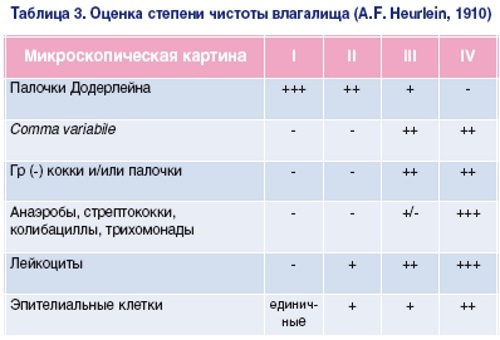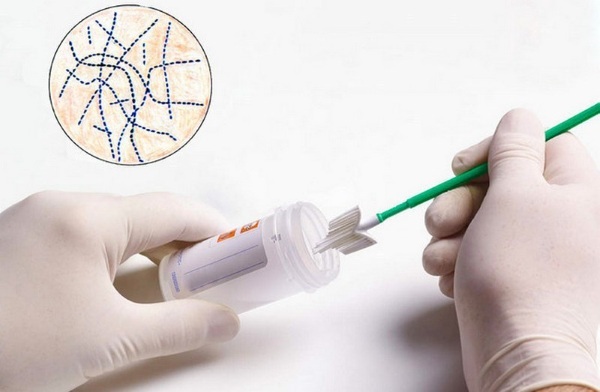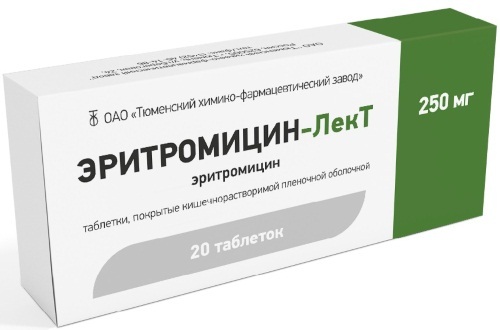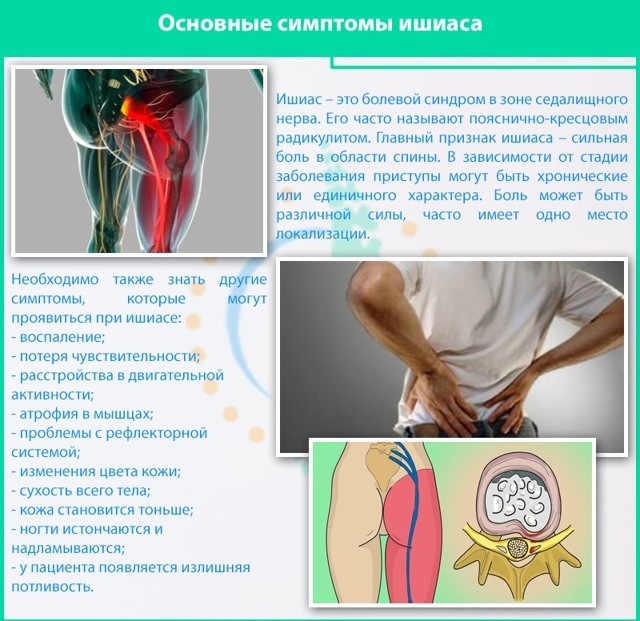Content
- Streptococcus agalactiae in a smear in women: what is it and for whom are they dangerous?
- The rate of streptococci in the female vagina
- Reasons for a sharp increase in the number of streptococci in a smear
- Streptococcal Disease Symptoms
- Types of steptococcal infection
- Increased levels of bacteria during pregnancy
- How infectious is staphylococcus aureus in women to others?
- Laboratory diagnostics
- Treating streptococcal infection
- Local therapy
- Systemic treatment
- ethnoscience
- Consequences
- Video about streptococci in a smear
Streptococci are microorganismsand that are in every human body. A small amount of them is not hazardous to health. An increase in opportunistic flora and the appearance of streptococcus spp in women in a smear indicates the development of pathological processes. It is necessary to visit a gynecologist, undergo an examination and establish the cause of the growth of opportunistic bacteria.
Streptococcus agalactiae in a smear in women: what is it and for whom are they dangerous?
Streptococci are microorganisms that live on the mucous membranes of the human body. In most cases, opportunistic bacteria are found, which at rest are not dangerous to a woman's health. Their activity increases under the influence of negative factors. As pathogenic bacteria multiply, an inflammatory process develops, and concomitant clinical symptoms appear.
The rate of streptococci in the female vagina
A small amount of streptococci are present in the vagina in all women. The most common bacteria are group B, D and green. Normal indicators at which streptococci are contained on the surface of the genitals is 104 CFU / ml.
An increase in the established norms indicates the development of pathological processes. It is necessary to consult a specialized specialist and a medical examination to make a diagnosis.
Reasons for a sharp increase in the number of streptococci in a smear
A sharp increase in streptococci in a smear in women in the vagina indicates the development of an inflammatory process, the causative agents of which are pathogenic bacteria. Consultation of a gynecologist and laboratory diagnostics is required.
There are the following reasons for the rapid increase in the number of streptococci in a smear in women:
- hormonal imbalance;
- decreased immunity;
- frequent viral infection of the body;
- high sensitivity to bacteria;
- chronic diseases, with an exacerbation of which the defenses of the human body decrease;
- non-compliance with simple rules of personal hygiene;
- self-medication;
- the development of dysbiosis in the vagina;
- endocrine system diseases;
- tight underwear made of low-quality materials that do not allow air to pass through;
- stressful situations, experiences, emotional outbursts;
- hypothermia of the body;
- refusal to use protective equipment during sexual intercourse.
When taking antibacterial drugs, an increase in pathogenic flora occurs due to a negative effect on beneficial bacteria. The same applies to hormonal agents, cytostatics. During the period of carrying a baby, a woman is often diagnosed with a streptococcal infection, since the hormonal balance is disturbed, and immunity is reduced.
Streptococcal Disease Symptoms
Streptococcus spp in a smear in women, developing, provokes numerous clinical symptoms. It all depends on the disease caused by pathogens.
Despite this, there are general symptoms with which you must immediately consult a gynecologist:
- pain and itching in the perineal region;
- unpleasant yellow discharge in large quantities, sometimes with blood impurities;
- painful sensations in the lumbar region or in the lower abdomen of a pulling, sometimes acute nature;
- violation of the menstrual cycle.
Timely diagnosis of a vaginal infection and properly selected therapy will help to quickly stop pathological processes and prevent serious complications. Self-treatment in this situation must be categorically excluded so as not to aggravate the state of health.
Types of steptococcal infection
The causative agents of streptococcal infection are classified depending on the area of localization of the pathological focus.
In medicine, the following types of pathogens are distinguished:
| Name | Description |
| Streptococcus A (streptococcus anginosus) | Pathogenic bacteria that provoke a strong inflammatory and purulent process in the area of an open wound on the skin. Once inside the body, streptococcus A causes the development of necrosis, affecting the tissues, which leads to the appearance of toxic shock. |
| Streptococcus B (streptococcus agalactiae) | A type of streptococcal infection, which is more often detected in pregnant women during the period of bearing a child. The provoking factor is hormonal failure. The infection is dangerous for the baby, as pathogenic bacteria cross the placenta. When infected, there is a high probability of infection of the fetus and the onset of miscarriage. |
| Streptococcus D | Conditionally pathogenic flora that settles on the mucous surface of the genitals, gastrointestinal tract. During pregnancy, group D streptococci are easily transmitted from mother to child, which is also dangerous for the developing fetus. |

A comprehensive diagnosis prescribed by a gynecologist will help to accurately determine the type of infection and the degree of its development. If necessary, the patient may also need advice from other specialized doctors (therapist, urologist, surgeon, venereologist, gastroenterologist).
Increased levels of bacteria during pregnancy
During the period of gestation, the expectant mother is more likely to have group B streptococcal infection (25%). Medical examination before childbirth is prescribed without fail, since there is a high risk of infection of the child during labor.
In the future, streptococcal infection for a baby is dangerous with consequences and complications. These are meningitis, pneumonia, sepsis. Therefore, when bacteria are detected, the mother is prescribed compulsory treatment, even with insignificant rates.
Streptococcus agalactiae manifests itself in a pregnant woman with characteristic clinical signs, mainly at 33 weeks of gestation. Young mothers under 20 are at risk. In some situations, streptococcal spp infection in a smear in women is asymptomatic. Therefore, the disease is more dangerous for the health of the child, as it provokes dangerous complications. Fetal mortality in this situation is 30%.
How infectious is staphylococcus aureus in women to others?
Infection of a healthy body with staphylococcal infection occurs in several ways:
| Name | Description |
| Contact (household) | The infection enters a healthy body after using common personal hygiene items. Bacteria penetrate inside through wounds on the body (scratches, cuts). |
| Sexual | Streptococcal infection settles on the mucous surface after unprotected intercourse. |
| Intrauterine | Fetal infection occurs through the placenta or during labor, when the baby passes through the birth canal. |
| Airborne | Infection occurs during close contact with a sick person. The spread of streptococcal infection is observed through coughing, sneezing, kissing, or the secretion of phlegm from the respiratory tract. |
Infection with a staphylococcal infection also occurs when eating unwashed products that have not undergone normal heat treatment. The same applies to improper skin care, if you squeeze out purulent formations, acne. Disease-causing bacteria enter the vagina during improper washing.
Laboratory diagnostics
A comprehensive examination at the appearance of the first complaints in a woman is carried out in order to establish an accurate diagnosis and determine the degree of development of the disease. It is necessary to perform differential diagnostics, since common signs are accompanied by numerous gynecological pathologies (gonorrhea).
Streptococcus spp in a smear in women will help identify the following research methods:
| Name | Description |
| Polymerase chain reaction (PCR) | The most accurate method for diagnosing infectious diseases. |
| Smear | A highly reliable method for diagnosing streptococcal infection, the results of which will be available 24 hours after the delivery of the biomaterial.
|
| Express test | Testing that you can do yourself at home. |
| General and biochemical blood test | The inflammatory process affects blood parameters. |
| General urine analysis | The results of the study will help to establish the degree of damage to the genitourinary system. |
| Bacteriological culture | A diagnostic method that allows you to establish the type of pathogen of the pathological process and select the most effective drugs. |

A specialized specialist will help to interpret the results obtained after the study. The doctor will also select the treatment, taking into account not only the established diagnosis, but also the patient's symptoms. It is recommended to refuse independent therapy, especially during the period of carrying a baby. It is important to differentiate the infection, since many diseases are accompanied by similar clinical symptoms (diphtheria, rubella, endocarditis, dermatitis).
Treating streptococcal infection
Streptococcal infection in women is treated with complex methods. Medicines and local products are used. If there are no medical contraindications, treatment with folk recipes is allowed. Patients need to strictly observe bed rest and rest during the period of therapy in order to prevent the occurrence of possible complications.
Local therapy
Local treatment of streptococcal infection in women is carried out using vaginal suppositories:
| Name | Application | Contraindications |
| Polygynax | Tablets are injected into the vagina before bedtime, 1 pc. The treatment lasts 6-12 days. |
|
| Hexicon | Suppositories are injected deep into the vagina 1-2 times a day. The course of treatment lasts 7-10 days. |
|

It is important to take medications as directed by a doctor or as directed to reduce the likelihood of side effects.
Systemic treatment
Complex therapy involves not only the use of topical agents. Together with them, it is recommended to take medications by mouth to obtain the most effective therapeutic result.
Streptococcus spp in a smear in women is treated with the following systemic medications:
| Drug group | Name | Application |
| Antibacterial drugs | Erythromycin, Ceftriaxone | The medicine is taken orally before meals for 1.5 hours or after meals after 2-3 hours. The adult dosage is 200-500 mg 4 times a day, depending on the patient's condition. The course of therapy lasts 5-14 days. |
| Probiotics | Linex, Bifiform | The drugs are prescribed in combination with antibacterial drugs to restore the beneficial microflora. Adults are prescribed 2 capsules 3 times a day. The tablets should be taken with a little water. |
| Antihistamines | Claritin, Cetrin | Adults are advised to take 10 mg orally once a day. |
| Immunostimulants | Immunal, Immudon | Medicines help restore the body's defenses and boost immunity. The standard dosage of the drug is 20 drops 3 times a day. The medicine can be taken with a little water. The course of treatment lasts 1-8 weeks. |
| Enterosorbents | Enterosgel, Atoxil | The drugs are used to detoxify the body. Adults are advised to take 1 tbsp. 3 times a day. The course of therapy lasts on average 7-14 days. |

Additionally, systemic therapy provides for the intake of vitamin C, which strengthens the walls of blood vessels, has an antioxidant effect and increases the body's defenses, improving its resistance.
During the period of therapy, patients also need to drink more pure water, teas, fruit drinks, compote. The liquid removes toxins from the body and helps to avoid severe intoxication.
ethnoscience
Streptococcus spp in a smear in women can be treated with unconventional methods. Use recipes of healers and healers in complex therapy, but strictly after consulting a gynecologist. Natural ingredients are safe for a woman's health, but they can provoke allergies or individual sensitivity. A specialist will help you choose the most effective and safe means of healers and healers.
| Name | Recipe | Application |
| Succession | Grind the herb and pour 20 g of hot water (400 ml). Insist 2-3 hours and drain. | The finished broth should be taken orally. The adult dosage is 100 ml 4 times a day. |
| Rose hip | Pour 2-3 tbsp. berries of the plant with hot water (500 ml). Put on medium heat, simmer for 5 minutes and cool. The resulting solution should be infused for 4-5 hours.
|
The ready-made broth should be drunk 2 times a day, in the morning and in the evening, 150 ml each. |
| Burdock | Grind dry grass and pour 200 g of vodka (500 ml). Leave for a week. | The strained tincture is recommended to be taken orally for 1 tsp. 3 times a day. |
If a woman has been diagnosed with a streptococcal infection in a smear, it is recommended that she add onions, black currants, and peeled apricot pulp to her diet.
Consequences
Incorrectly selected therapy or a complete lack of treatment will lead to the fact that a streptococcal infection in a woman will progress. As the disease progresses, complications or concomitant pathological processes will appear. Streptococcal infection in a smear in a woman can provoke diseases of the urinary system.
| Name | Description |
| Cystitis | The disease is characterized by an inflammatory process that affects the walls of the bladder. |
| Vaginitis | A pathological condition in which the mucous membrane in the vagina becomes inflamed. The main cause of the disease is disease-causing bacteria. |
| Adnexitis | The disease provokes inflammation of the uterine appendages (ovaries and fallopian tubes). |
A complication of streptococcal infection during the period of carrying a baby is damage to the genitourinary tract, spontaneous abortion, meningitis, endocarditis in a child. The functioning of the entire body is at risk as bacteria release large amounts of toxins. The work of the immune system deteriorates, cells of internal organs are destroyed. The production of antibodies leads to the development of autoimmune disorders.
Numerous bacteria are present in the vagina of women, which do not affect the health of the body until a certain point. Under the influence of negative factors, microorganisms are activated. Streptococcus spp appears in a smear in women. The characteristic symptoms of the inflammatory process appear. The patient needs to undergo specially selected treatment to prevent serious complications.
Video about streptococci in a smear
Doctor about streptococcus in a smear:



